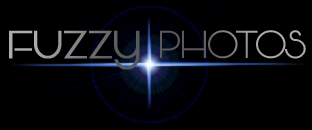| Image Links | |
| Published image | Full resolution |
| Annotated image | Full resolution |
| Target Information | |
| Main Target Designations | Sh2-117 (North American Nebula) |
| RA Center | 21h 00m 17.761s |
| DEC Center | 43° 45' 58.53" |
| Rotation | -0.750° (North is up) |
| Pixel Scale (as posted) | 0.805 arcseconds/pixel |
| Exposures | |
| SiiHaOiiiRGB | 900'/780'/880'/42'/42'/66' |
| Sii subframes | 45 x 1200" @ 1x1 |
| Ha subframes | 39 x 1200" @ 1x1 |
| Oiii subframes | 44 x 1200" @ 1x1 |
| R/G/B subframes | 14/14/22 x 180" @ 1x1 |
| Total Integration | 45hrs 10min |
| Period of Acquisition | Aug/Sep 2020 |
| Location | Animas, NM |
| Equipment | |
| Imager | SBIG STF-8300M |
| Telescope/Lens | TS Optics N-AG12 12" Newtonian Astrograph @ f/4.56 |
| Mount | Mesu 200 Mk II |
| Guiding Apparatus | OAG-8300 |
| Guiding Camera | QHY5L-II |
| Filter Wheel | FW8-8300 |
| Wide Filters | Astrodon Gen II RGB |
| Narrowband Filters | Astrodon Ha 5nm, Oiii 3nm, Sii 3nm |
| Accessories | |
| Coma Corrector | TS Optics 3" N-AGK3 |
| Collimator | Howie Glatter 650nm laser |
| Focusing | Feather Touch True 3.0" with Focus Boss II |
| Software | |
| Acquisition | Sequence Generator Pro |
| Guiding | PHD2 |
| Processing | PixInsight 1.8 |
It's one of the most popular narrowband targets among astrophotographers, and for exceptional reason! Meet the great Cygnus Wall, a 20 light-year long ridge embedded in a much larger region better known as the North American Nebula. This wall area (which to the creative geographic mind marks the shore along Latin America) is teeming with star formation activity. The young hot stars energize dense quantities of Hydrogen, Oxygen, and Sulphur gas which in turn emit a tri-color feast for our eyes.
This image represents the first I've posted with 3 distinct narrowband channels, mapped here in the classic Hubble "SHO" palette with Sulphur assigned to Red, Hydrogen to Green, and Oxygen to Blue. By using this false color mapping, we can truly appreciate the wonderful variety of gas densities throughout the region, something brought to even greater contrast and depth with huge bands of opaque obstructing dust. In addition to the gas mapping, stars have been mapped to a standard true color (RGB) palette to represent the area in a natural light, something which I first attempted with the Helix Nebula and will continue to do for other narrowband targets given the pleasing success it's achieved in my data.
After having become so accustomed to faint and difficult targets, this strong narrowband region was a real treat to process. In fact, the signal was so good that it took some restraint not to over-sharpen the countless folds throughout the ridge. This explosive, evolving area is just one more example of the incredible activity that happens right "next door" to us - indeed only 1500 light years away!

